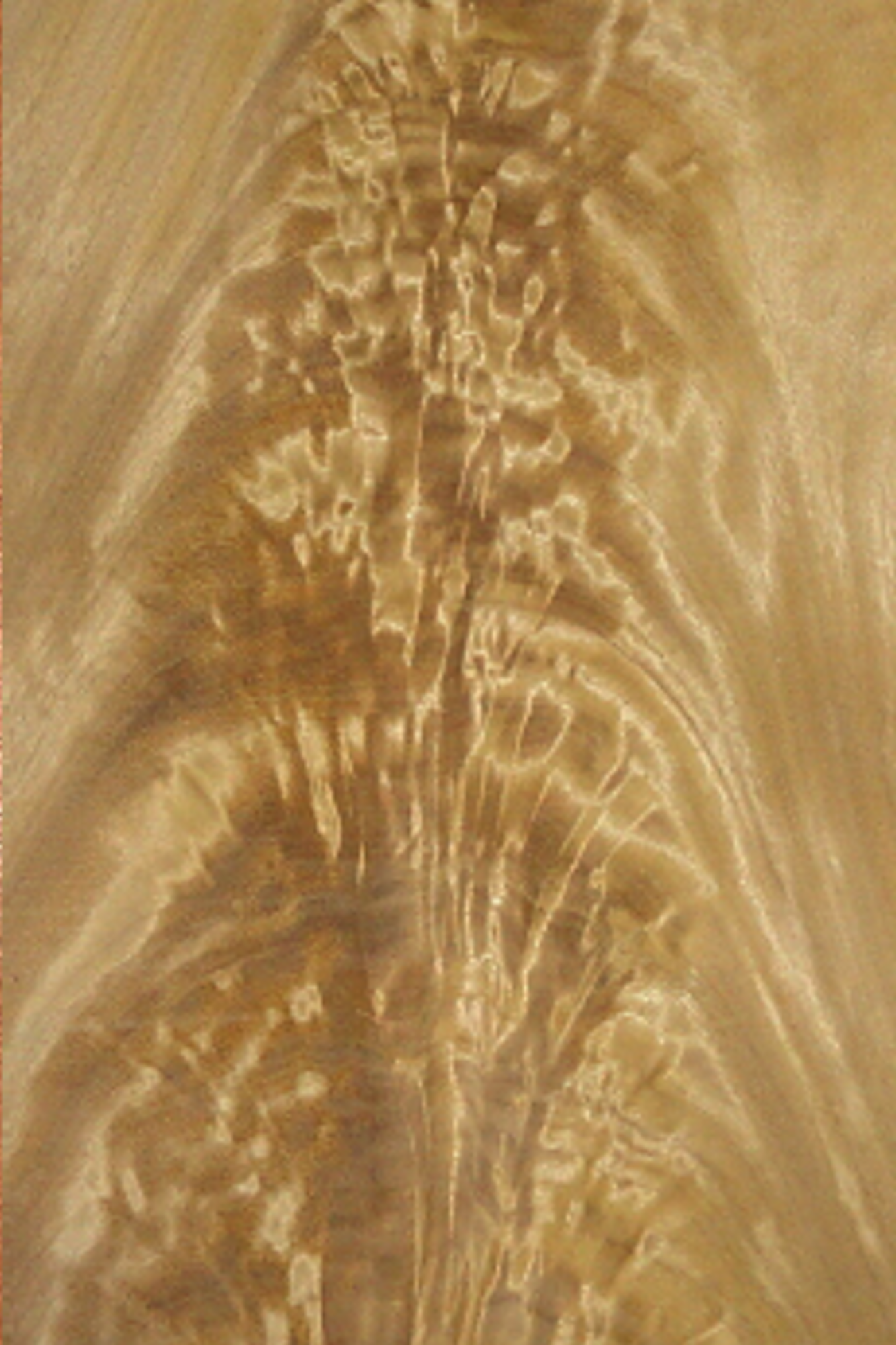Latin Name: Chloroxylon swietenia
Common Name(s): East Indian Satinwood, Ceylon Satinwood
Sources: Central and southern India, and Sri Lanka (formerly Ceylon)
|
Characteristics
|
Heartwood ranges from light to golden yellow, to orangish brown. Whitish yellow sapwood generally paler than heartwood, but not always clearly demarcated from heartwood. Frequently seen with a mottled or rippled grain pattern, resembling ripples in satin fabric, lending to its name satinwood. |
|
Grain/ Texture
|
Grain is interlocked, producing an attractive mottle figure, as well as striped or roey patterns on quartersawn surfaces. Texture is fine and even, with a very high natural luster. |
|
Workability
|
Difficult to work on account of its high density and interlocked grain. Most surfacing and planing operations result in tearout, especially on quartersawn surfaces. Pronounced blunting effect on cutters. Turns superbly. Glues and finishes well—able to take a high natural polish. |
|
Uses
|
Veneer, inlays, fine furniture, turned objects, and other small specialty items. |
|
Availability
|
Increasingly scarce, with prices very high. Typically only available in veneer form, though some boards (mostly unfigured) are occasionally available. Figured pieces (particularly solid lumber) are likely to be extremely expensive. |


